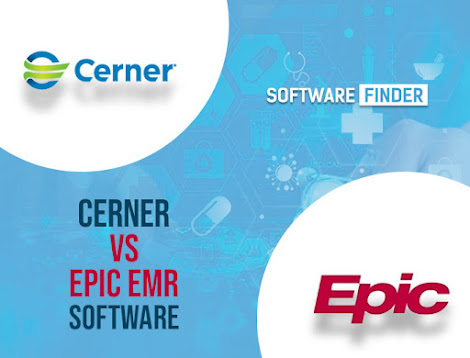There are some key differences between Cerner and Epic. Epic is a more expensive option, but it is also more widely used in larger healthcare organizations, and clinical, and ambulatory care. The companies do not disclose pricing information publicly, but news of large contract deals suggests that Epic is slightly more expensive than Cerner. The costs of both systems depend on the specific implementation. However, both have a wide range of features and functionality. Let's discuss Epic Vs Cerner
Price tag
Cerner and Epic are two popular EHRs. Both offer more than 50 specialty modules, but the difference is in the price. Epic is the more expensive option, but it is ideal for large organizations and very wealthy buyers. Epic has dominated the market for large healthcare institutions but recently expanded its functionality to smaller practices. In addition, it recently launched Sonnet, a free, smaller EHR that includes more specialty modules.
Though Epic was once considered an underdog in the healthcare IT industry, it has now become a top competitor in enterprise clinical and revenue software. Founded in 1979 by Judy Faulkner, the company now has systems in many of the nation's largest health systems. As a privately held company, Epic is not subject to the same acquisition pressures that plague Cerner, and it reinvests a huge part of its profits into product development. Epic also has a reputation for being responsive to customers, and its user-friendly interface is a big plus for small and mid-sized healthcare organizations.
User interface
A key difference between Cerner EMR and Epic is their user interface. While both EMRs feature a good UI, there are some areas where Epic is better than Cerner. Epic users generally praise the simplicity of its UI, and it is easier to switch between notes and papers. However, users of both systems must master both the interface and functionality of each system to get the best results. The user interface of each system is crucial to the overall performance of the EMR.
While both EHRs are user-friendly, Cerner's interface is not the most intuitive. Although it boasts a well-designed graphical user interface, many users report that the interface does not match their expectations. This can make it difficult to focus on patient care, as it is difficult to navigate the program's menus and buttons. This, coupled with its lack of intuitiveness, makes Cerner less usable.
International revenue
While both companies have increased their focus on international markets, they still need to improve implementation and execution in international markets. In recent years, both companies have been able to secure state and territory-wide deployments, but the success of their international initiatives depends on the number of contracts they win. In Australia, for instance, Epic has won a contract for $151 million with the Australian Capital Territory. This contract is significant for both companies because it represents the first time that centralized contracting has been introduced in the Capital Territory.
The companies' revenue growth is driven by deals with large health systems and specialty hospitals. Epic increased its acute hospital market share by 74 beds in 2021 and gained four new customer organizations. Cerner also secured a major deal with the Department of Veterans Affairs, which includes 147 acute care hospitals and 20 specialty hospitals. However, in the ambulatory market, the competition is more diverse. A combination of smaller and larger organizations has prompted many providers to switch to Epic.















0 Comments